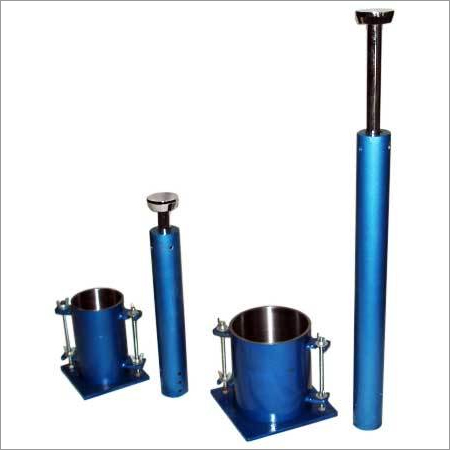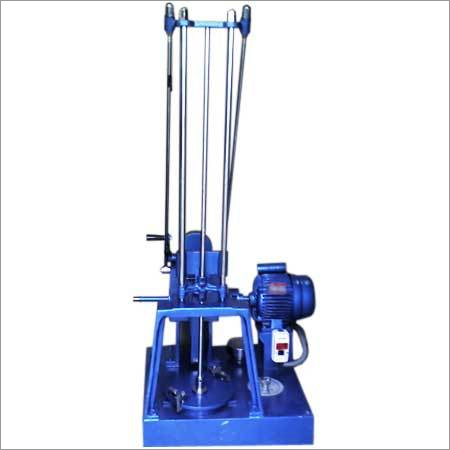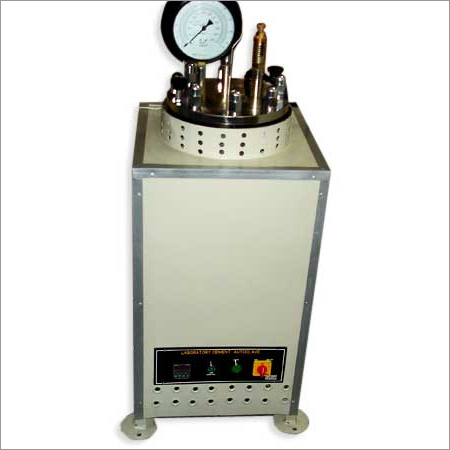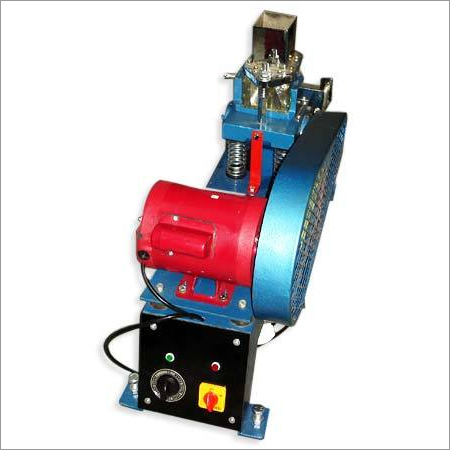Universal Permeability Apparatus
Universal Permeability Apparatus Specification
- Technology
- Manual
- Machine Type
- Laboratory Grade
- Accessories Type
- Standpipe, Overflow Pipe, Connecting Tubes, Glass Measuring Cylinder
- Automation Grade
- Manual
- Surface Treatment
- Powder Coated
- Power Source
- Manual (No Power Required)
- Control System
- Hand Operated Valves / Manual Control
- Operating Pressure
- Atmospheric
- Accuracy
- High Precision (1%)
- Features
- Corrosion resistant, Leak proof, Durable construction
- Type
- Universal Permeability Apparatus
- Material
- Mild Steel, Borosilicate Glass, Brass Fittings
- Application
- Geotechnical Engineering, Soil Testing Laboratories
Universal Permeability Apparatus Trade Information
- Minimum Order Quantity
- 1 Number
- Supply Ability
- 04 Per Month
- Delivery Time
- 3-8 Week
About Universal Permeability Apparatus
We are the leading manufacturers of the Permeability Apparatus that is developed as per an IS: 2720 (Part XVII) unit. We manufacture the units as per the specifications of our customers. The units are produced using good quality raw materials for a longer life of the product.The Apparatus Consists Of The Following :
- A gunmetal mould which is 100mm dia. x 127.3mm height x 1000ml volume
- An extension collar 100mm dia. x 60mm high
- Drainage base plate having a recess for a porous stone with an outlet valve
- Metallic clamping ring
- Drainage cap (Top plate with a recess for a porous stone and fitted with an inlet valve and an air release valve)
- Dummy plate to serve as a false bottom curing compaction
- Porous stone for drainage base plate
- Porous stone for drainage cap
- Set of three glass stand pipes in approximate sizes of 6 mm dia., 10mm dia. and 20mm dia. mounted on a stand
- 3 meter long rubber connecting tube with pinch cock.
Our Universal Permeability is offered with 9 glass tubes on a wooden stand. There is also a provision for an overhead tank which is made of G.I Sheet and also a rammer for above of 2.6 kg. which is available at extra cost.
Dual Methodology for Comprehensive Testing
This apparatus allows users to perform both Falling Head and Constant Head permeability tests interchangeably. Such flexibility ensures suitability for a wide range of soil types, making the equipment invaluable for academic research, routine soil investigation, and quality control in construction projects.
Durable, Transparent Construction
The use of borosilicate glass and transparent acrylic in the construction of the permeameter tubes promotes clear visibility during experiments and guarantees resistance to chemical exposure. Combined with a mild steel powder-coated frame and brass fittings, the apparatus is built for longevity and ease of cleaning.
Precise and Manual Flow Control
A manually operated precision needle valve offers stringent control over water flow during testing. This level of regulation enhances test accuracy, making the device suitable for both academic and professional laboratory applications where high precision is paramount.
FAQs of Universal Permeability Apparatus:
Q: How do I operate the Universal Permeability Apparatus for soil permeability testing?
A: To operate the apparatus, prepare a soil sample using the standard 100 mm mould, insert it into the permeameter, fill the system with water, and select the desired test method (Falling Head or Constant Head). Use the manual control valves and needle valve to regulate water flow, and record readings using the glass measuring cylinder.Q: What makes this apparatus suitable for both Falling Head and Constant Head tests?
A: This instrument is equipped with two permeameters and dedicated precision valves, allowing seamless switching between Falling Head and Constant Head methods. The accompanying accessorieslike standpipes and overflow pipesaccommodate each tests requirements, providing comprehensive testing in a single setup.Q: When should I use the Falling Head versus the Constant Head test method?
A: The Falling Head method is generally preferred for soils with low permeability, such as clays or silts, whereas the Constant Head method is suited for more permeable soils like sands and gravels. Selection depends on soil type and the tests objective.Q: Where is this Universal Permeability Apparatus typically used?
A: It is primarily utilized in geotechnical engineering and soil testing laboratories, academic research centers, and construction quality control labs. Its portability and manual operation also allow for occasional field use, if necessary.Q: What is the process for maintaining this soil permeability apparatus?
A: Routine maintenance involves cleaning the glass and acrylic tubes with mild detergent after each use, checking for leakage around fittings, and ensuring the powder-coated frame and brass components are dry to maintain corrosion resistance.Q: What are the key benefits of using this apparatus in a laboratory setting?
A: Key advantages include high testing accuracy (1%), ease of observation due to transparent materials, dual test methodology, and a durable, leak-proof design. Its manual operation eliminates power requirements, making it reliable and cost-effective.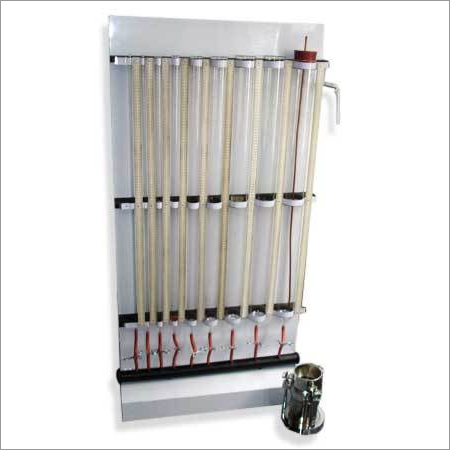

Price:
- 50
- 100
- 200
- 250
- 500
- 1000+
More Products in Civil Engineering Instruments Category
Proctor Compaction Apparatus
Price Range 10000.00 - 600000.00 INR / Number
Minimum Order Quantity : 1 Number
Function : Determines maximum dry density and optimum moisture content of soil
Technology : Manual and Mechanical Operation
Accessories Type : Mould, Rammer, Collar, Base Plate, Spacer Disc
Type : Soil Compaction Testing Equipment
Automatic Compactor
Price Range 10000.00 - 600000.00 INR / Number
Minimum Order Quantity : 1 Number
Function : Compacts Soil Samples Automatically
Technology : Automatic Digital Control
Accessories Type : Sample Moulds, Rammer, Base Plate
Type : Compactor
Cement Autoclave
Price Range 10000.00 - 600000.00 INR / Number
Minimum Order Quantity : 1 Number
Function : Testing Expansion of Cement
Technology : Hydrothermal (Autoclave) steam curing
Accessories Type : Pressure Gauge, Safety Valve, Specimen Holder
Type : Vertical Cylindrical Chamber
Vibrating Machine
Price Range 10000.00 - 600000.00 INR / Number
Minimum Order Quantity : 1 Number
Function : Consistently Vibrates Molds for Compaction
Technology : Vibratory Technology
Accessories Type : Cube Molds, Timer, Vibration Table
Type : Testing / Laboratory Vibrating Machine
Factory Address :
Plot No 47, Emerald Indl Estate, Kidc Indl Area, Deku Village, Khalapur Taluk,
Khopoli Raigad, Maharahtra

 Send Inquiry
Send Inquiry
